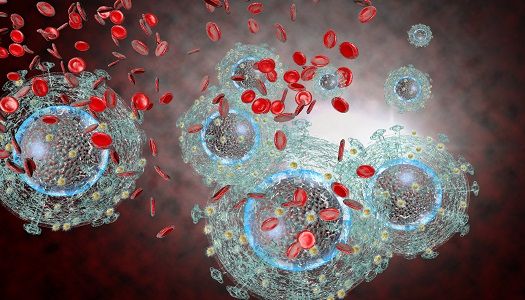Article
Cancer Risk Comes with HIV-Hepatitis B, C Co-Infection
Author(s):
The risk of getting Non-Hodkins Lymphoma is greater in patients co-infected with hepatitis B and hepatitis C if those patients are also receiving anti-retroviral therapy for HIV infection.

People who have HIV are at higher risk of getting lymphoma, about 100 times greater than the general population. Even after they get antiretroviral therapy people who are HIV positive have a 10-fold higher risk of lymphoma.
A new study from Europe found that having HIV plus a hepatitis virus (B, C, or both) further adds to the risk of lymphoma, specifically non-Hodkgins lymphoma (NHL) .
But in a puzzling finding the researchers learned that these HIV positive co-infected patients do not have an increased NHL risk when co-infected with hepatitis unless they are getting antiiretroviral therapy.
Reporting in Annals of Internal Medicine , Andrea De Luca, MD and colleagues from the Collaboration of Observational HIV Epidemiological Research Europe (COHERE) group did a cohort study based on medical records from more than 50,000 patients. The group all had HIV plus chronic hepatitis B virus (HBV) or hepatitis C virus (HCV).
All patients in the study were treatment naïve for HIV, that is they had not started ART.
There were 1,339 patients with HBV and 7,508 with HCV. Of those 210 had both viruses.
They found that ART-treated patients with chronic HBV or HCV infection were at increased risk for NHL.
The hazard ratios for NHL with HBV and HCV infection were 1.33 and 0.67, respectively, in patients who had not started ART.
In patients who did start ART for their HIV infections, the hazard ratios were 1.74 for HBV and 1.73 for HCV.
“Estimates in ART-naïve patients were less certain, possibly due to the lower number of events, limited floow-up due to some patients initiating ART or other unmeasured competing factors masking the effects of chronic HBV and HCV infection.”
Early diagnosis and treatment of HIV infection in conjunction with routine screening for chronic HBV and HCV infection is essential to decrease NHL morbidity and mortality I HIV infected persons, the team concluded.
In an accompanying editorial, Charles Rabkin, MD, and James Goedert, MD, of the National Cancer Institute in Bethesda, MD said "this study highlights the urgent need to prevent HCV and HBV infection in people living with HIV and to trat those who are co-infected."
Related Coverage:
Pre-Exposure Treatment for HepC?
AbbVie HCV Drug Gets Breakthrough StatusHep C: Australia Provides DAAs in Program to Eradicate Virus





